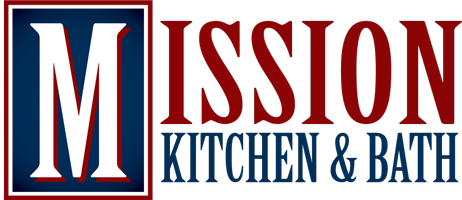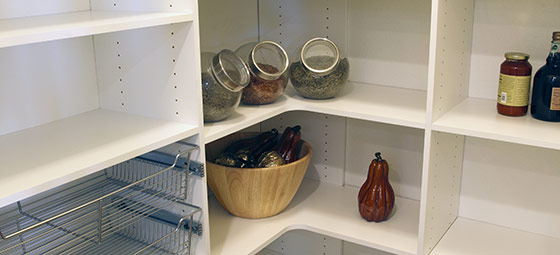Pantry storage is a must-have in any kitchen. But not all pantries are the same. If you’re remodeling your kitchen or just looking to maximize storage space, creating the right pantry is essential.
There are a few universal rules for the perfect pantry. Ideally, your kitchen pantry should be able to store at least a week’s worth of groceries. Everything inside should be easily visible and accessible. Everything should be on a single layer, with nothing behind it or beneath it. You should be able to get what you need without having to move other items out of the way to reach it. Shelves inside your pantry should be adjustable so you can change the height to accommodate larger or smaller items as needed.
There are three main types of kitchen pantries
• The reach-in pantry is the most common and the most convenient. The reach-in pantry should be about 14 to 16 inches deep. Anything deeper should have roll-out shelves or baskets to make everything easily accessible.
• The pull-out pantry pulls out from inside of a cabinet. This is the least convenient type as it requires the pantry door to be fully extended.
• The walk-in pantry offers the most space and flexibility but is often located far away from the work area, making it less convenient. A walk-in pantry is great as a second pantry that can be used for storing large quantities of food that are used to stock the primary pantry.
To achieve the perfect pantry, organization is key, regardless of the size of your pantry. This means having the right type and configuration of shelving. You can use solid shelves or wire shelves. Solid shelves will prevent items from dropping through, but wire shelves allow you to see what’s on the shelves more easily and they’re easier to keep clean. The ideal shelf depth is 10 to 14 inches. Shelves should not be more than 16 inches deep or you will have difficulty accessing items in the back. The ideal height of your shelves should be 16 to 18 inches for bulky storage, 12 to 14 inches for general storage, and 6 to 8 inches for bottles and cans. Make sure your shelves are adjustable, preferably in 2-inch increments so you can adjust them as needed. Any shelves above eye level should be wire and should be shallower than the lower shelves so that you can easily see the items stored on them without having to use a step ladder.
Your pantry should be located close to where you will be preparing food, ideally within 48 inches, and next to your refrigerator. Both the pantry and the refrigerator should be located on the edge of the kitchen so that they can be accessed without disrupting activity in the kitchen. In some kitchens, it may work better to have more than one pantry, each placed near the area where it will be accessed. For example, keep dry, boxed, and canned foods in one pantry, baking supplies in another pantry, and keep bulk items in a walk-in pantry adjacent to the kitchen that can be used to restock the smaller pantries.
A number of features can be added to your pantry to make them even more functional. Slide-out shelves and baskets are especially helpful for deeper shelves. They allow you easy access to items in the back that you may otherwise forget about or have difficulty accessing. You can also use small baskets and bins mounted to the inside of pantry doors to make use of that otherwise wasted space for small items like snacks. The inside of the pantry door is also a great place for a whiteboard or bulletin board where you can keep a running grocery list or post appointment reminders and school schedules. For reach-in pantries, consider installing an LED light strip down the sides so each shelf is well illuminated.

